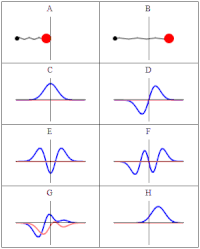
Photo from wikipedia
We apply spin wave theory to two-dimensional coupled antiferromagnets. In particular, we primarily examine a system that consists of small spins coupled by a strong exchange interaction J1, large spins… Click to show full abstract
We apply spin wave theory to two-dimensional coupled antiferromagnets. In particular, we primarily examine a system that consists of small spins coupled by a strong exchange interaction J1, large spins coupled by a weak exchange interaction J2, and an anisotropic exchange interaction J12 between the small and large spins. This system is an effective model of the organic antiferromagnet λ-(BETS)2FeCl4 in its insulating phase, in which intriguing magnetic phenomena have been observed, where the small and large spins correspond to π electrons and 3d spins, respectively. BETS stands for bis(ethylenedithio)tetraselenafulvalene. We obtain the antiferromagnetic transition temperature TN and the sublattice magnetizations m(T) and M(T) of the small and large spins, respectively, as functions of the temperature T. When T increases, m(T) is constant with a slight decrease below TN, even where M(T) decreases significantly. When J1 ≫ J12 and J2 = 0, an analytical expression for TN is derived. The estimated value of TN...
Journal Title: Journal of the Physical Society of Japan
Year Published: 2018
Link to full text (if available)
Share on Social Media: Sign Up to like & get
recommendations!